Something that has found a lot of interest from dairy farmers in recent years is 10 milkings in a week.
Challenging milk prices, high costs and nitrates banding, coupled with challenges to secure labour on some farms, has led to an increased interest in flexible milking.
The perception for many years on dairy farms is one of which that there are long working hours, little time off and physically demanding.
In many cases this is true, but while many farms are now recruiting staff, work-life balance has been taken more seriously.
Flexible milking and improving on finishing times can be key factors to creating a desirable place to work for potential employees, therefore attracting and retaining good people to the dairy industry.
One third of total hours
Milking on farms accounts for approximately one third of the total hours worked on a dairy farm, according to studies completed by Teagasc dairy specialist Martina Gormley. Altering milking frequencies could have a big part to play in improving work-life balance on dairy farms.
At the National Dairy Conference 2023, Martina discussed milking times and milking intervals taken from milk recording data from 2,366 herds across the country.
From this data, the mean start time for milking in the morning was 6.57am and start time in the evening was 5.14pm. This left the mean milking interval to be 09:48 hours on farms.
The key point Martina made from this data was that many farms are beginning the evening milking when they could be finished.
Following up from this, she showed that there was no change in milk production after an eight-hour milking interval, but a strong correlation between milking interval and the length of the working day.
Further data showed that there was no change in milking times or intervals throughout the lactation, meaning workload had little impact on milking times and it was more of a working habit.
What is flexible milking?
Flexible milking is any milking which differs from the traditional twice a day (TAD) milking, referring to both how many milkings in a week and milking intervals.
The idea to research flexible milkings came from New Zealand (NZ), as less than half of NZ farmers are milking TAD for the full lactation.
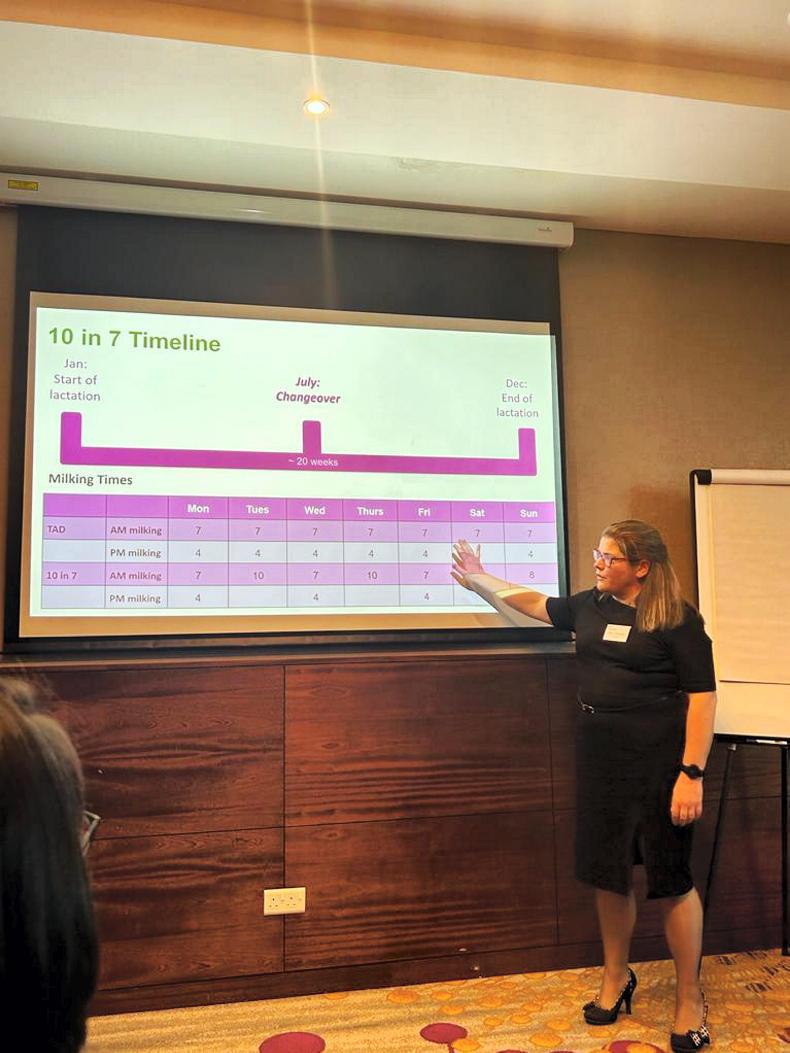
Emer Kennedy speaks about flexible milking for farmers.
Heading up a new study in Moorepark in 2022 was senior research officer Emer Kennedy. The study compared once a day (OAD) milking, milking 10 times a week for full lactation (F107), milking 10 times a week for the second half of the lactation (P107) and TAD milking. This study was repeated in 2023, which saw similar results to 2022.
Milking cows 10 times a week for the full lactation had a 14% reduction in milk yield and an 11% reduction in milk solids, suggesting percentages rose.
P107 had very little reduction in production over the full lactation period. Cows were milked TAD for the first 20 weeks and then switched to 10 in seven.
This study showed only a 5% reduction in milk yield and a 4% reduction in milk solids. This was impressive, as there was 28% less milkings for the second half of the lactation. When compared with OAD milking, there was a 26% reduction in milk yield and a 21% reduction in milk solids.
Most successful
Milking cows 10 times a week for the second half of the lactation seemed to be the most successful, as it had very little impact on overall production, while saving on labour and improve work-life balance.
The irregular milking times also had no impact on breeding, as they only began milking 10 times a week as breeding was finished, also having savings on water and electricity usage.
There was also a positive effect on cow body condition score when milking 10 times in a week.
Somatic cell count (SCC) rose slightly. When SCC was compared for the second half of the lactation, there was a 5% rise in SCC for TAD milking versus a 10% rise for P107.
Also speaking on the day was Waterford dairy farmer Aidan Aherne. Aidan milks 216 cows between Cappoquin and Dungarvan and there is one full-time employee on the farm.
Aidan milks OAD for the first three weeks in the spring to help with labour demand. He began milking three times every two days for the second half of lactation in 2021. He found the irregular milking times harder to manage, especially at the weekends.
He then moved to 10 in seven for simplicity. He milks at 6.30am and 3.30pm and again at 9.30am the next day. He says it has helped him a lot with family time. He can be around in the morning to bring his kids to school before milking.
Aidan has seen a 20% reduction in volume and 15% reduction in solids from September until the end of lactation. Spread over the whole lactation, this saw a little decrease which he is very happy with.
He says grass allocations can require a bit more thinking and management at the beginning, but advises farmers not to overthink it.
Something that has found a lot of interest from dairy farmers in recent years is 10 milkings in a week.
Challenging milk prices, high costs and nitrates banding, coupled with challenges to secure labour on some farms, has led to an increased interest in flexible milking.
The perception for many years on dairy farms is one of which that there are long working hours, little time off and physically demanding.
In many cases this is true, but while many farms are now recruiting staff, work-life balance has been taken more seriously.
Flexible milking and improving on finishing times can be key factors to creating a desirable place to work for potential employees, therefore attracting and retaining good people to the dairy industry.
One third of total hours
Milking on farms accounts for approximately one third of the total hours worked on a dairy farm, according to studies completed by Teagasc dairy specialist Martina Gormley. Altering milking frequencies could have a big part to play in improving work-life balance on dairy farms.
At the National Dairy Conference 2023, Martina discussed milking times and milking intervals taken from milk recording data from 2,366 herds across the country.
From this data, the mean start time for milking in the morning was 6.57am and start time in the evening was 5.14pm. This left the mean milking interval to be 09:48 hours on farms.
The key point Martina made from this data was that many farms are beginning the evening milking when they could be finished.
Following up from this, she showed that there was no change in milk production after an eight-hour milking interval, but a strong correlation between milking interval and the length of the working day.
Further data showed that there was no change in milking times or intervals throughout the lactation, meaning workload had little impact on milking times and it was more of a working habit.
What is flexible milking?
Flexible milking is any milking which differs from the traditional twice a day (TAD) milking, referring to both how many milkings in a week and milking intervals.
The idea to research flexible milkings came from New Zealand (NZ), as less than half of NZ farmers are milking TAD for the full lactation.

Emer Kennedy speaks about flexible milking for farmers.
Heading up a new study in Moorepark in 2022 was senior research officer Emer Kennedy. The study compared once a day (OAD) milking, milking 10 times a week for full lactation (F107), milking 10 times a week for the second half of the lactation (P107) and TAD milking. This study was repeated in 2023, which saw similar results to 2022.
Milking cows 10 times a week for the full lactation had a 14% reduction in milk yield and an 11% reduction in milk solids, suggesting percentages rose.
P107 had very little reduction in production over the full lactation period. Cows were milked TAD for the first 20 weeks and then switched to 10 in seven.
This study showed only a 5% reduction in milk yield and a 4% reduction in milk solids. This was impressive, as there was 28% less milkings for the second half of the lactation. When compared with OAD milking, there was a 26% reduction in milk yield and a 21% reduction in milk solids.
Most successful
Milking cows 10 times a week for the second half of the lactation seemed to be the most successful, as it had very little impact on overall production, while saving on labour and improve work-life balance.
The irregular milking times also had no impact on breeding, as they only began milking 10 times a week as breeding was finished, also having savings on water and electricity usage.
There was also a positive effect on cow body condition score when milking 10 times in a week.
Somatic cell count (SCC) rose slightly. When SCC was compared for the second half of the lactation, there was a 5% rise in SCC for TAD milking versus a 10% rise for P107.
Also speaking on the day was Waterford dairy farmer Aidan Aherne. Aidan milks 216 cows between Cappoquin and Dungarvan and there is one full-time employee on the farm.
Aidan milks OAD for the first three weeks in the spring to help with labour demand. He began milking three times every two days for the second half of lactation in 2021. He found the irregular milking times harder to manage, especially at the weekends.
He then moved to 10 in seven for simplicity. He milks at 6.30am and 3.30pm and again at 9.30am the next day. He says it has helped him a lot with family time. He can be around in the morning to bring his kids to school before milking.
Aidan has seen a 20% reduction in volume and 15% reduction in solids from September until the end of lactation. Spread over the whole lactation, this saw a little decrease which he is very happy with.
He says grass allocations can require a bit more thinking and management at the beginning, but advises farmers not to overthink it.





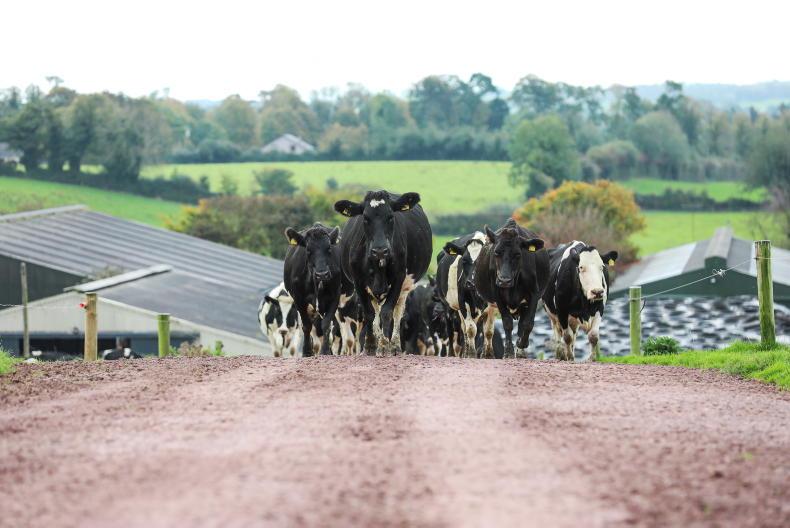
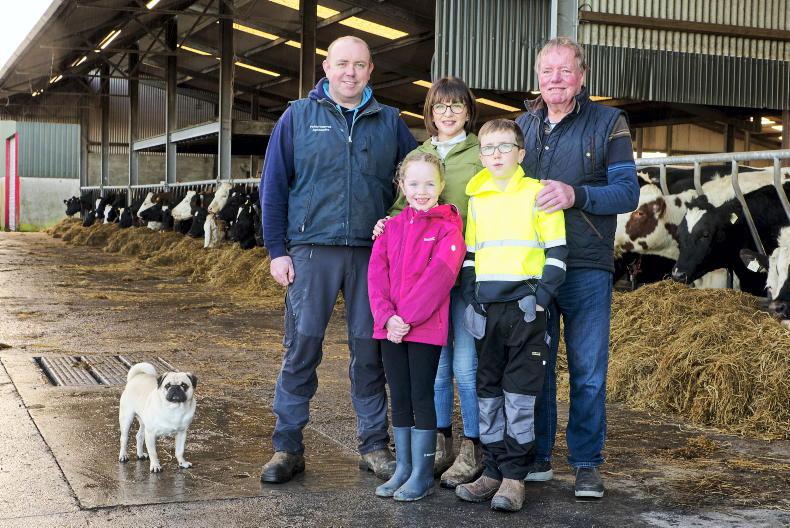
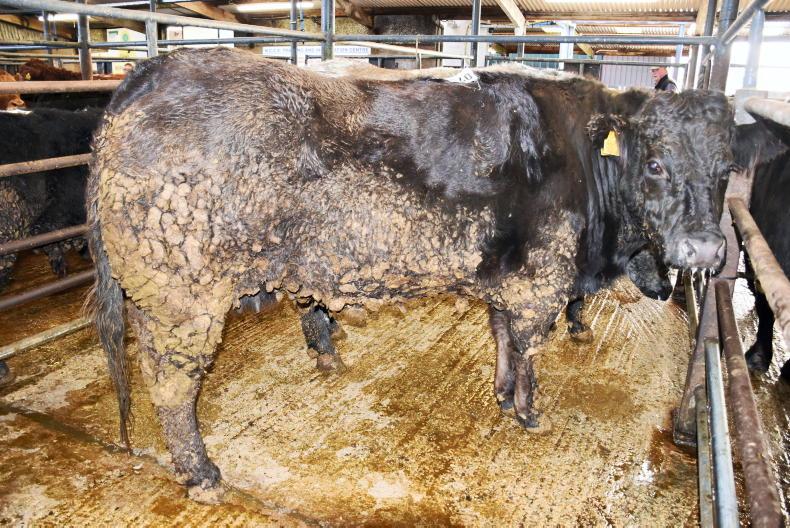
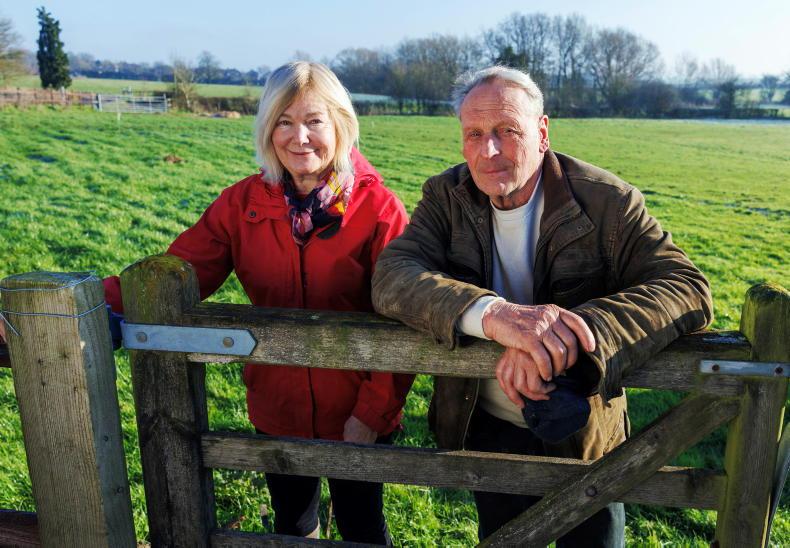
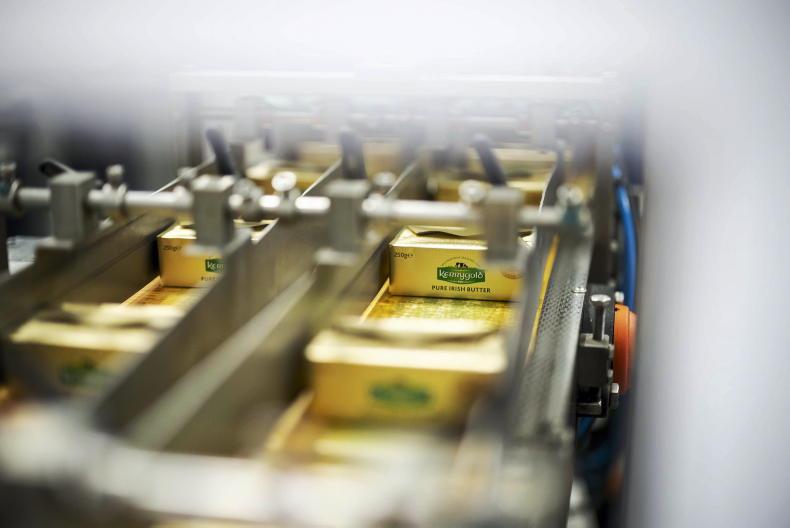
SHARING OPTIONS